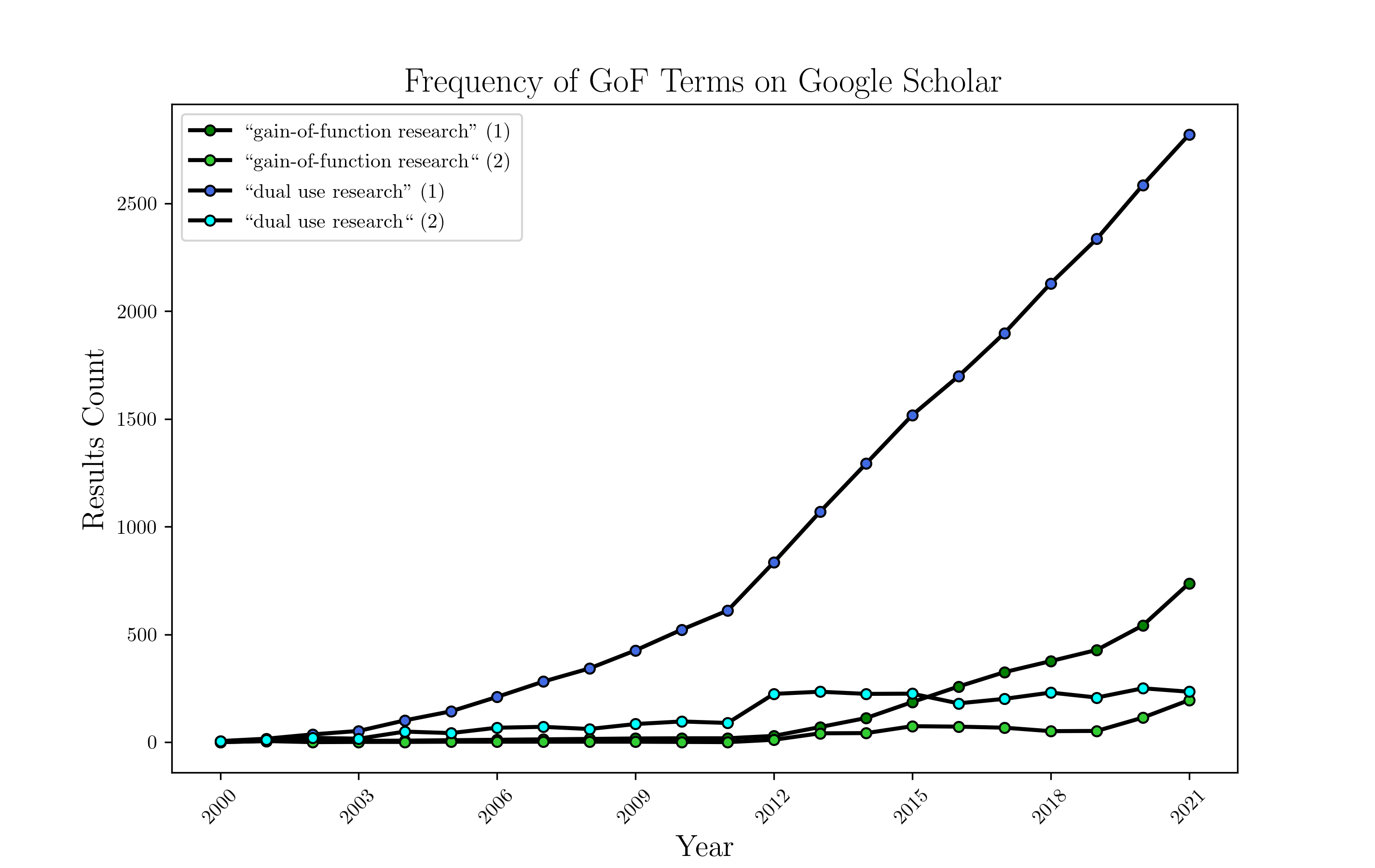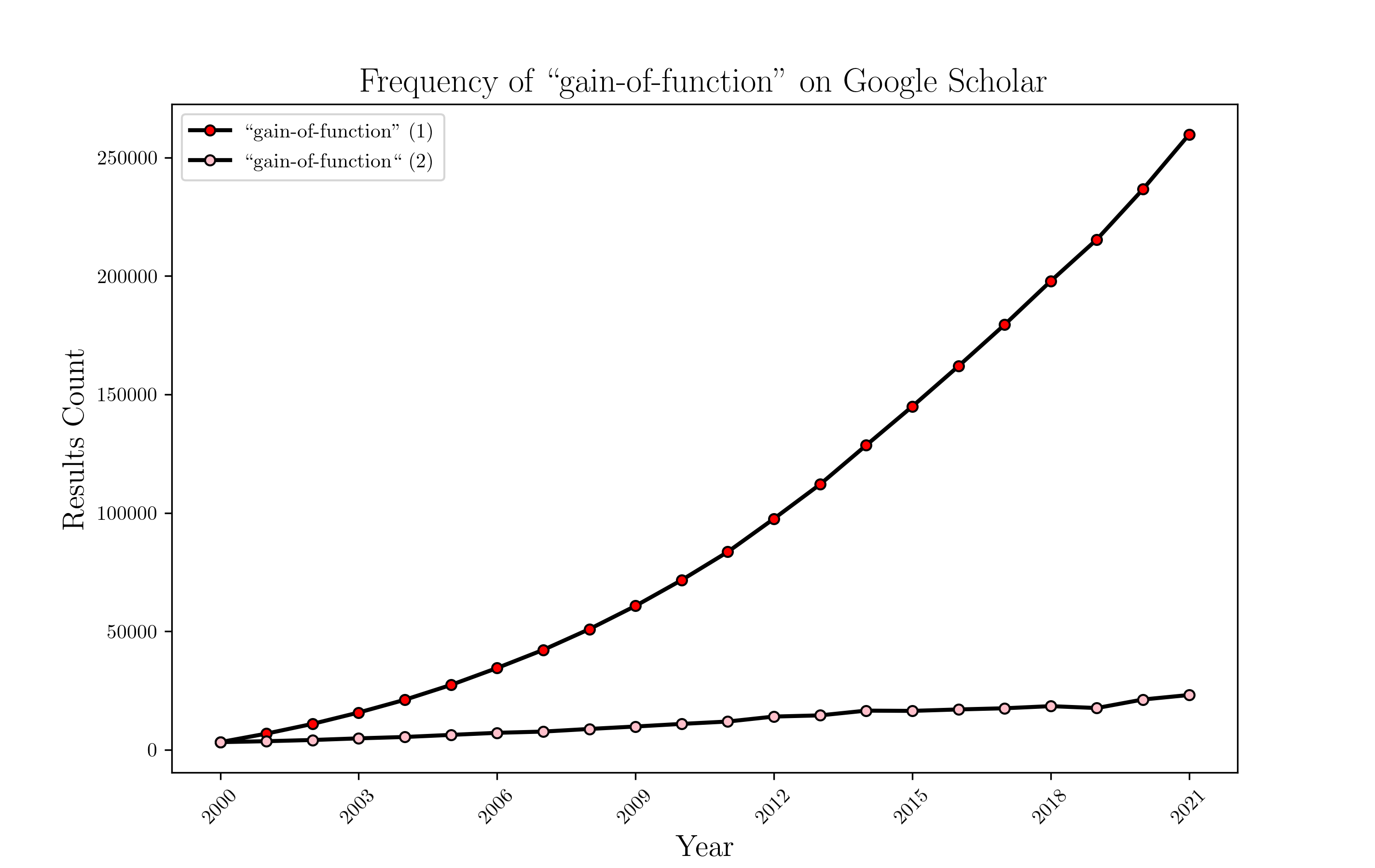Given the advance in underlying biological tools/technology, I would not find it surprising if gain-of-function research had increased 10x over the last decade. (This is just based on priors; getting an actual estimate is the point of this question.)
Why is this interesting? Assuming that both original covid and at least one strain were lab leaks, the rate of growth of gain-of-function research has a huge impact on how often we should expect future pandemics from lab leaks. If the amount of gain-of-function research has been roughly constant over the last 20 years, then the two covid leaks suggest a base rate of something like one or two pandemic-level leaks every 20 years, and covid was probably unusually hard to contain in a lab for some reason on top of that. On the other hand, if the field has grown 10x in the past 5 years, that suggests a base rate more like a leak every 2-3 years (and probably getting faster over time as the field continues to grow). If that's the case, then the base rate for pandemics will be way higher going forward than in the past.


The NSABB reviews GOF research in the USA, but:
"A committee at the Department of Health and Human Services is now tasked with making final decisions about what is and is not a gain of function experiment. But longtime critics of federal oversight still aren't pleased. Ebright claims that apart from two projects carried over from prior to 2017 — the Fouchier and Kawaoka research on H5N1 — there are no public records of any reviews being performed, suggesting that "the NIH doesn't flag projects for review, nullifying the policy.
Arturo Casadevall, a microbiologist at the Johns Hopkins Bloomberg School of Public Health, co-authored a 2020 editorial in the journal mBIO, reporting that both PC30 reviews to date have been made behind closed doors, despite guidance from the White House at the time the framework was released encouraging a transparent process."